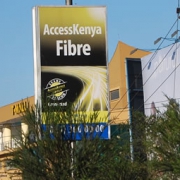How to get from economic malaise to food security?
Food security in the Horn of Africa hinges on greater investment in ICT infrastructure and capacity building. In large part, this will depend on the transfer of technology. But experts note that even a modest increase in technology transfer and information, through the agriculture value chain, could improve yields, distribution and ultimately strengthen food security.
The World Food Program (WFP) backed an initiative in March this year that is a step in the right direction. WFP provided US$45, 000 worth of ICTs for a Food Security Graduate Program at Addis Ababa University. The ICTs provided the institution with the tools and facility needed to boost efforts to develop a local hub for knowledge generation and dissemination for food security. A weak policy and financial environment has led to inadequate research, a lack of appropriate technologies and weak dissemination of existing smart tools. So, lowering food insecurity in the region requires greater effort.
Improving food security is a key development challenge for the Horn of Africa, the world’s most food insecure region according to the FAO. Over 45% of the 160 million strong population remain food insecure, higher than the average even for Saharan Africa. The World Bank says the region must attain a 4% expansion in GDP and similar growth in agricultural expansion, along with lower population growth rates, to become food secure in the medium-term. This all seems like a catch-22 situation for an already difficult political and economic landscape. Where do we start?
According to USAID’s analysis, The Magnitude and Causes of Food Insecurity and Prospects for Change, improving the economic policy environment—and a host of other structural problems such as security— is key. So, while ICTs can help to improve the region’s precarious food security situation, much more must be done to create an ICT enabling environment— further evidence that ICTs are merely tools.
One structural challenge is the cumbersome nature of intra-regional trade. ICTs, particularly logistics technology and applications used to speed up cross border movement, could help to better move food surplus from country to country (and region to region). At various points in recent time countries in the lower part of the Horn of Africa, including Kenya and Tanzania, have been in a position to shift their surplus to neighboring Ethiopia, and other northern states that are perennially food insecure.
However, the food security and ICT discussion in this region, as I have contended, is very complex. One must consider all the systemic domains and even broad issues of income distribution, which slants the distribution of food in Kenya and Tanzania, even in times of food excess on a national scale, in the favor of a few.







































